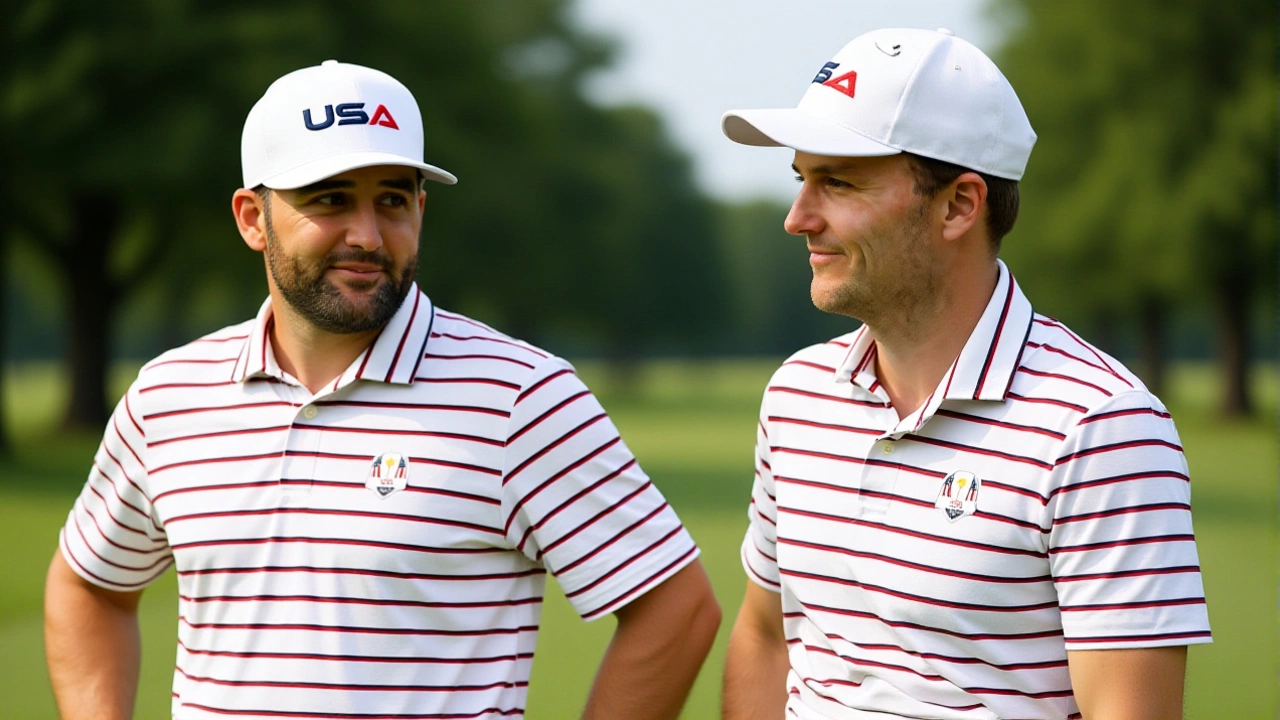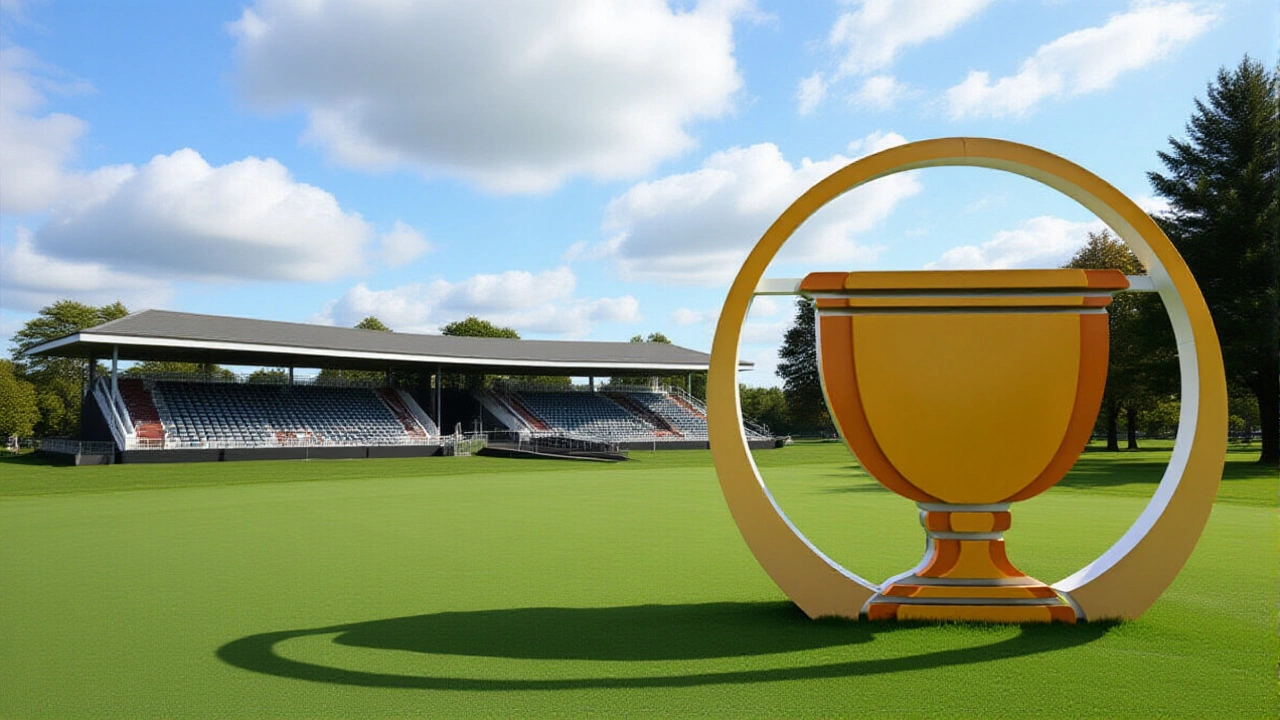Presidents Cup Venues 2026‑2030: Medinah, Kingston Heath & Bellerive
When the Presidents Cup announced its road map through 2030, the golf world got a clear peek at three iconic stops: Medinah Country Club in Illinois for 2026, Kingston Heath Golf Club in Australia for 2028, and Bellerive Country Club in Missouri for 2030. The trio not only stretches the competition across two continents, it also ties the event to courses that have shaped golf history for decades.
Why Medinah’s Course #3 matters for 2026
Founded in 1924 by the Medinah Shriners, Medinah Country Club opened its doors in 1928. Its signature Course #3 was originally laid out by Tom Bendelow, then refreshed in 1986 and again for the 2006 PGA Championship. The course earned a place in the record books when Tiger Woods captured the PGA titles there in 1999 and 2006, the latter after the layout was stretched to become the longest major‑championship course at the time.
Because the Presidents Cup will be staged on that same fairway, players and captains will have to reckon with the strategic challenges that once tested Woods – long, demanding irons and a brutal finishing stretch. The club’s three‑course complex also boasts a Moroccan‑style clubhouse, a nod to the Shriners’ heritage, adding a dash of visual drama to the tournament’s pre‑event festivities.
Kingston Heath: Melbourne’s sand‑belt jewel for 2028
Located in the Melbourne suburb of Cheltenham, Kingston Heath Golf Club sits on some of the finest sandy soil in the world, a hallmark of the famous Melbourne Sandbelt. The venue has already hosted the Presidents Cup once, in 1998, and the PGA Tour’s long‑term partnership with Visit Victoria guarantees appearances again in 2028 and a future edition in 2040.
The course, designed by Alistair MacKenzie, is celebrated for its taut, undulating greens and strategic bunkering that reward precision over power. Australian fans can already feel the buzz; the ‘Belt has produced multiple major champions, and the 2028 Cup will likely be a showcase for rising stars from the Asia‑Pacific region.
Bellerive Country Club adds the 2030 chapter
St. Louis’ Bellerive Country Club has a pedigree that reads like a who’s‑who of U.S. Open history – it was the site of Gary Player’s 1965 triumph that completed his career Grand Slam. Since then it has welcomed two PGA Championships (1992, 2018) and a string of senior events. The 2030 Presidents Cup will be the latest feather in its cap.
Beyond the trophies, Bellerive’s layout is known for a dramatic 18th hole that drops into a vaulted bunker‑filled valley – a potential nail‑biter for the final matches. The club’s ties to the Midwest golfing community also mean a surge in local fan engagement, something the PGA Tour has touted as a core goal for expanding the event’s U.S. footprint.

How the venue rotation reflects the Cup’s evolution
Since its inaugural showdown in 1994 at Robert Trent Jones Golf Club in Virginia, the Presidents Cup has grown from a modest biennial to a premier global spectacle. The early editions saw the United States dominate under captains like Hale Irwin, while International teams, led by legends such as David Graham, gradually closed the gap.
Each new venue adds a layer to the tournament’s narrative. The 2003 tie at The Links at Fancourt in South Africa, the first Asian edition in Incheon’s Jack Nicklaus Golf Club in 2015, and the 2017 New Jersey finish at Liberty National marked moments when geography directly influenced play styles and fan experience.
Impact on players, sponsors and host communities
- Players gain exposure to a wider variety of course architectures, sharpening their adaptability ahead of majors.
- Sponsors like Titleist and Rolex benefit from diversified media markets – Midwest U.S., Australian, and Midwestern Catholic‑heritage audiences all get a spotlight.
- Host towns see an estimated $12‑$15 million economic lift from tourism, hospitality and local vendor spending during the week‑long event.
What’s on the horizon after 2030?
While the PGA Tour has not yet spilled details beyond 2030, insiders hint at potential returns to Europe – perhaps the historic Royal Birkdale in England or a debut in South America. The ongoing dialogue between the Tour and international golf federations suggests the Cup will keep its “global” DNA, rotating between established strongholds and emerging markets.

Frequently Asked Questions
Why was Medinah chosen for the 2026 edition?
Medinah’s Course #3 offers a blend of historic prestige and recent major‑championship upgrades, making it a testing ground that mirrors the difficulty of today’s biggest tournaments. Its central location in Illinois also eases travel for both U.S. and International team members.
How does the Kingston Heath venue reflect the PGA Tour’s long‑term plans?
The partnership with Visit Victoria locks Kingston Heath into the 2028 and 2040 windows, signaling a strategic push to cement Melbourne as a recurring hub for elite golf, while also tapping into the booming Asian‑Pacific fanbase.
What makes Bellerive a compelling choice for 2030?
Bellerive’s storied championship pedigree, coupled with a dramatic finishing hole, promises a memorable showdown. The club’s Midwest location also broadens the Cup’s U.S. regional exposure beyond the traditional coastal venues.
How have previous venue choices influenced competition outcomes?
Courses with tighter fairways and penal rough, like Fancourt in 2003, often tighten scores and increase match‑play volatility. Conversely, wider layouts, such as at Liberty National in 2017, tend to favor aggressive play, which can widen margins between teams.
What economic impact can host cities expect?
Analysts estimate each Cup week injects roughly $12‑$15 million into local economies via hotel bookings, restaurant visits, and ancillary tourism, with spill‑over benefits lasting months as the venue gains international exposure.





